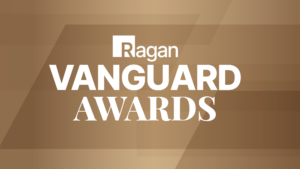How to think about word count and word choice in internal comms
When you’re communicating with your organization, keep it concise.

If you’re running the internal communications show at an organization, you’re going to need to write messaging that goes out to the rest of your coworkers at some point along the line. Simply put, that’s a big part of the job. But there’s a lot to be said about how exactly you achieve that end. It’s just as important to figure out how you’re relaying a message as it is to determine what you want to get across. It takes a deep knowledge of who you’re trying to reach, a sense of what information they need, and the best pathways to get there.
Keeping things concise
With so many tasks on their plates and so many emails in their inboxes, you’ve got to be smart to help your internal comms break through the noise to reach employees in your organization. Your team might have a stable of great writers at its disposal, but when your team is looking for an update on their insurance plans or news about the company outing, they don’t need the next great novel. They need the information clean, crisp and concise.
A great way to conceptualize this is by thinking about the time it might take you to read through an article like this one. At around 700 words or so, it should take two or three minutes to take in. Simply put, that type of word count is WAY too much for most internal messaging. Granted, you might have a blog from the CEO about the year-in-review or an in-depth post describing promotions for colleagues, but on the general whole, internal posts shouldn’t be more than a few paragraphs or several hundred words.
The right words matter
Keeping it short and sweet is a major, but only partial aspect of the words you choose in internal comms. You’ve also got to strike the right tone. This might seem sort of basic, but it’s incredibly important. For example, if you’re communicating to your organization that there’s going to be a merger with responsibilities and reporting structures that might change, you can’t use the same type of tone that you would for a summer gathering. Being able to maintain flexibility in your tone is key to ensuring your messages strike the right tone and resonate with your audience, ensuring that you can gin up that necessary engagement.
Again, your tone can go hand in hand with the length of your message. Generally, lighter materials will play better on social media, and you shouldn’t be putting paragraphs and paragraphs of information on your social channels — that’s just not going to be aesthetically pleasing, and people aren’t going to read that much. Keep it nice and short and sweet — and let the responses you garner in the comments help fill in the conversation you’re going for.
Picking the correct channels
Keeping your messages at the right length and knowing what words to choose is important, but if you’re not choosing the right pathways in which to distribute your messages, you’re not fully setting yourself up for success. There are some occasions when words alone might not be the right path to get your message across. For instance, according to a report by Hubspot, people are 30 times more likely to read the material presented in an infographic as opposed to that in simple text alone. Hubspot also reported that 80% of people consuming information remember what they see, while only 10% remember what they hear.
As internal communicators, it’s our duty to be able to change our modes of communication to keep things fresh and interesting. If you’re only communicating through a blog with just blocks of text, you’re a lot less likely to get the engagement you want as opposed to mixing in a multimedia approach. In today’s media landscape, in which you’ve got a minimal amount of time to earn someone’s attention, having a varied approach is one of the best ways to get stakeholders attuned to what messaging you’re providing.
In short, when you’re putting together internal messaging, keep it short, know what words are the right ones, and vary up your delivery method. That’s the best way to set yourself up for success and real engagement that’s sustainable.
Sean Devlin is an editor at Ragan Communications. In his spare time he enjoys Philly sports, a good pint and ’90s trivia night.







